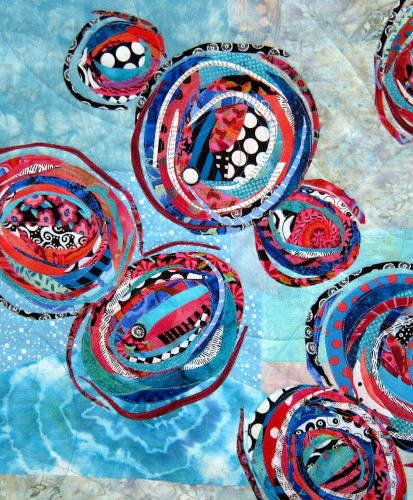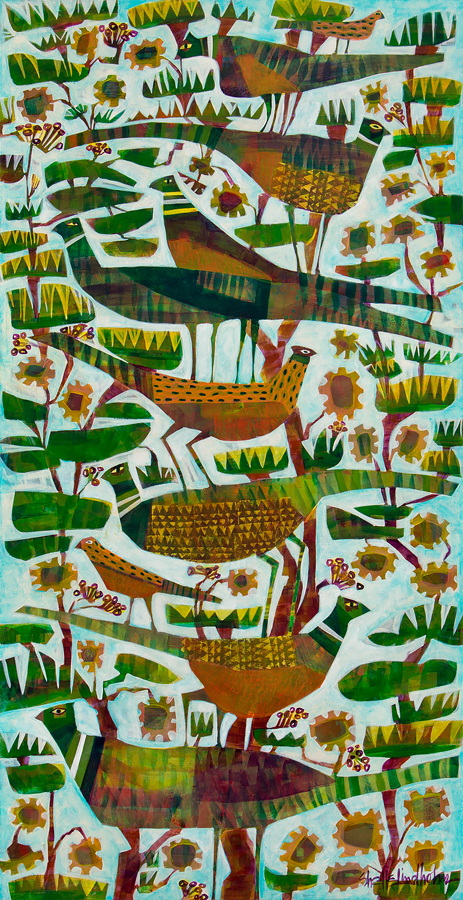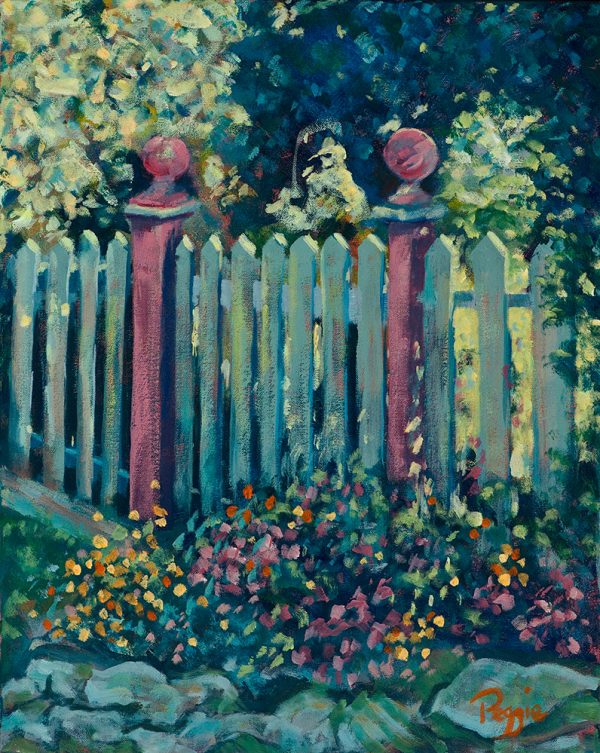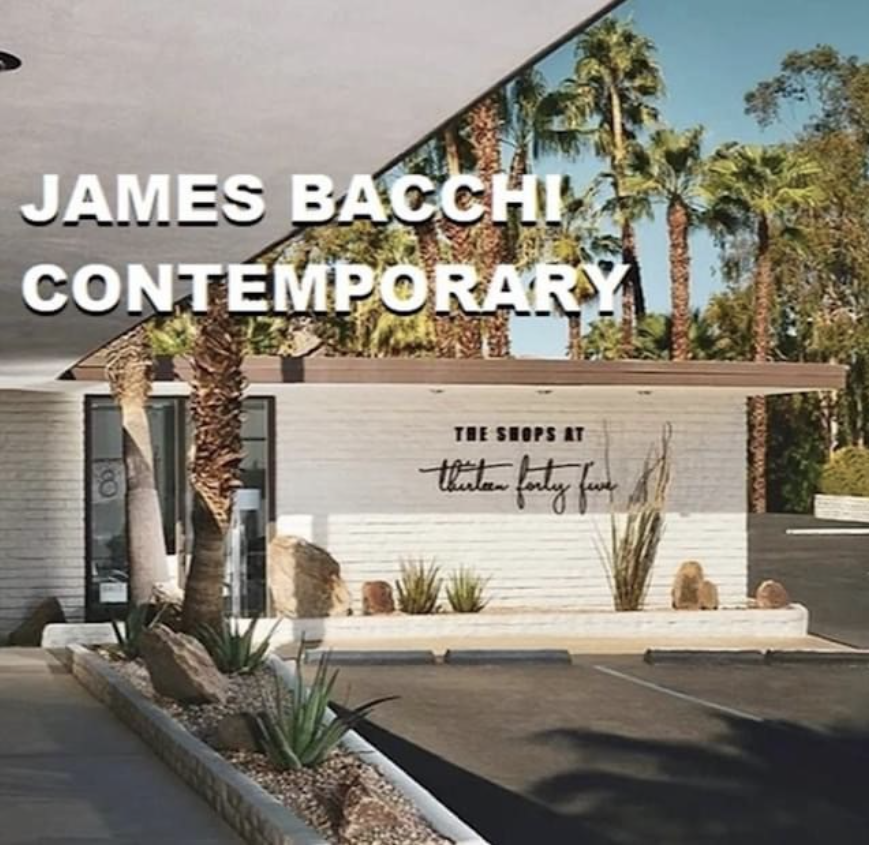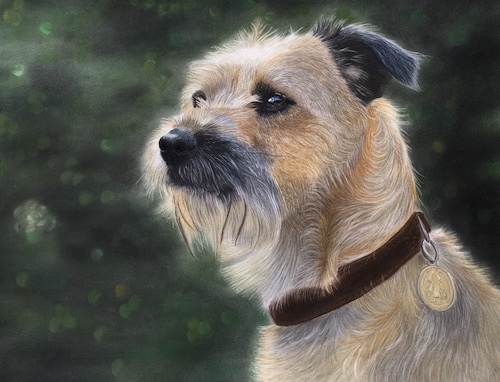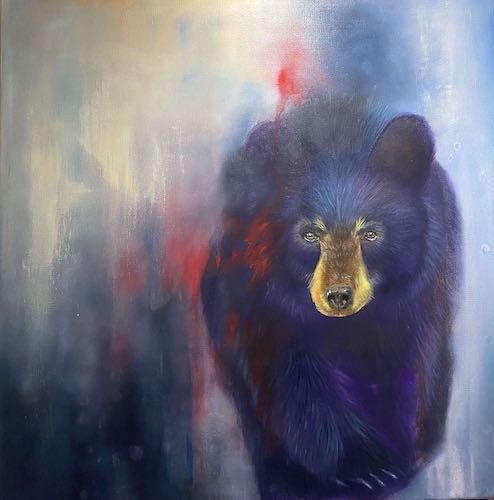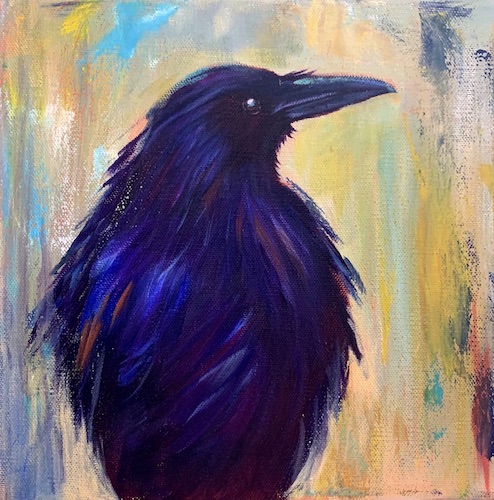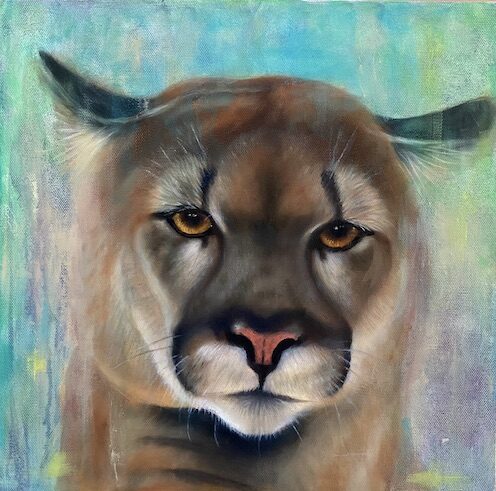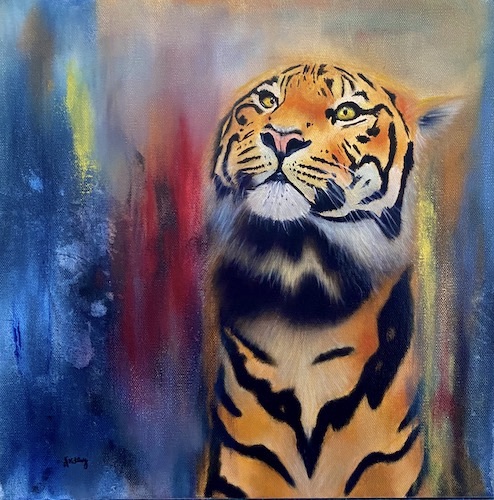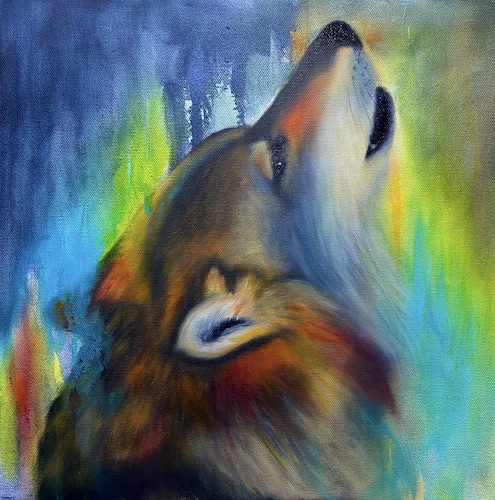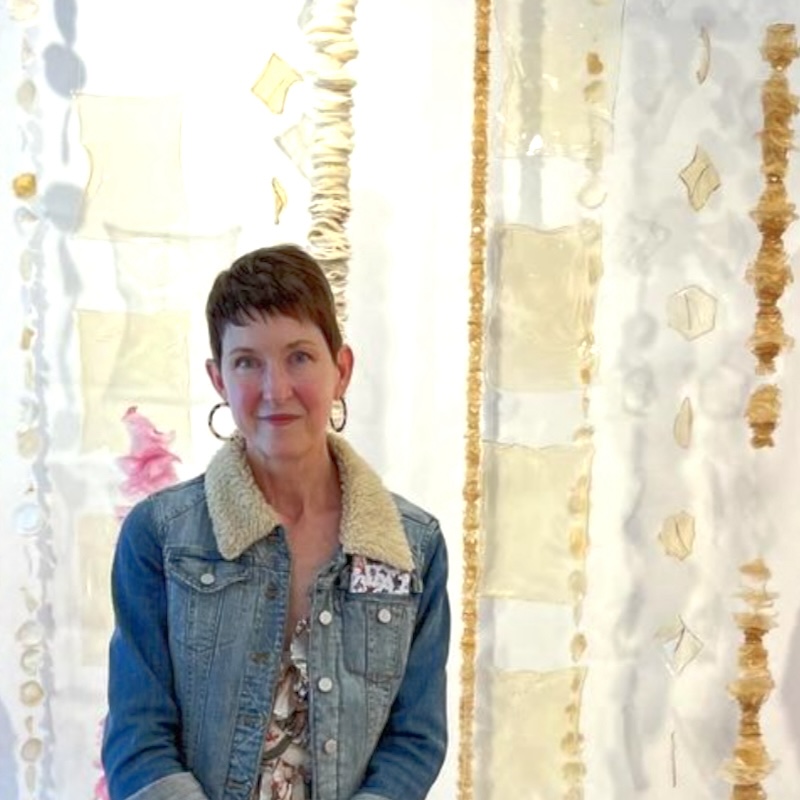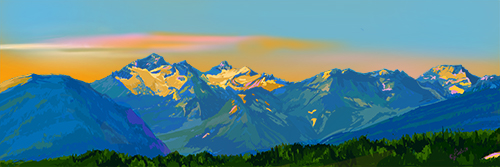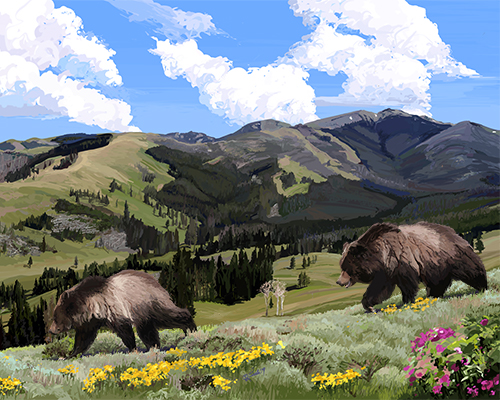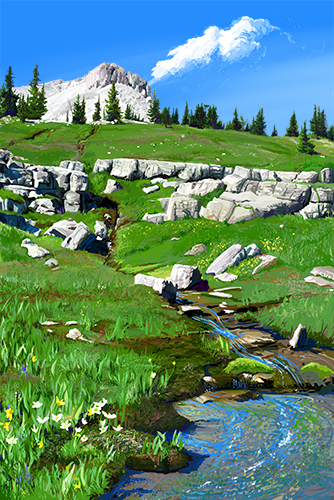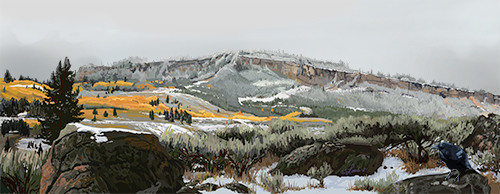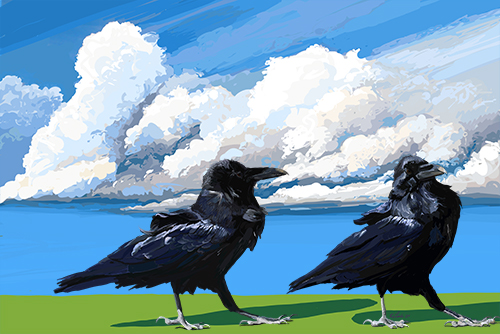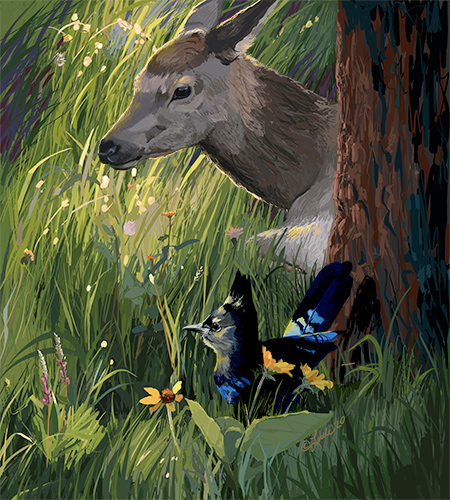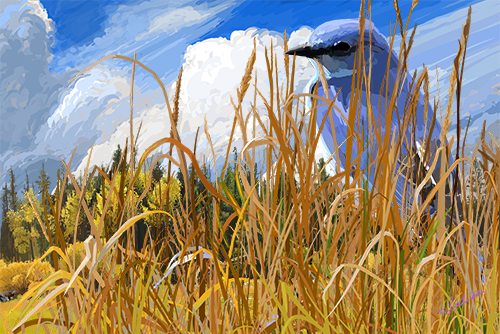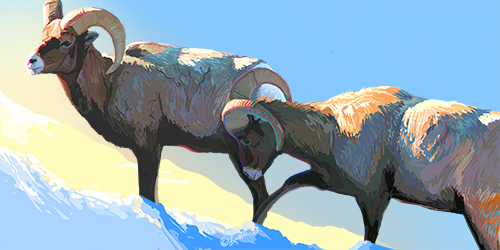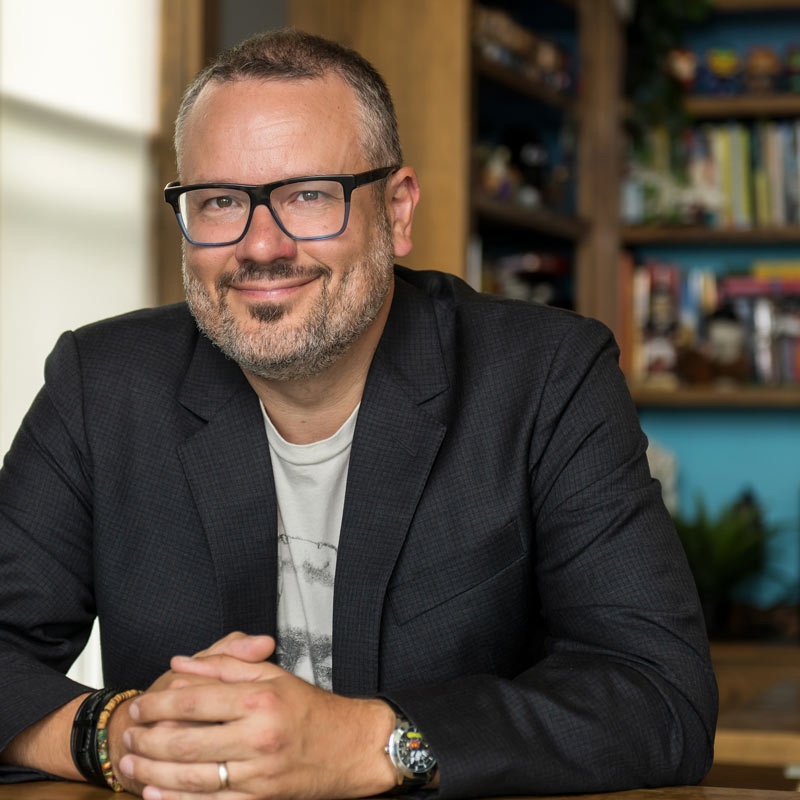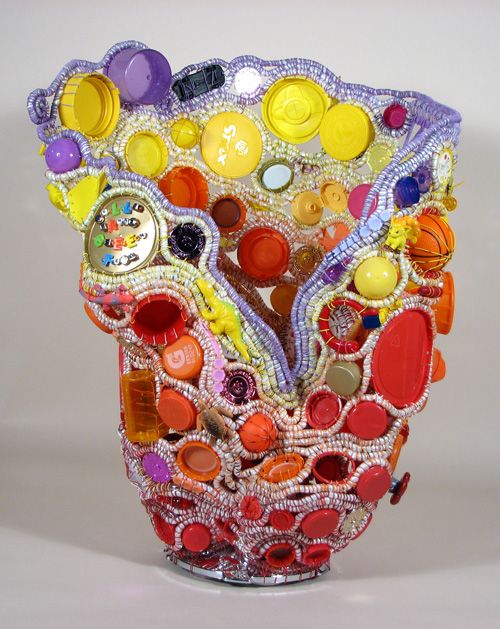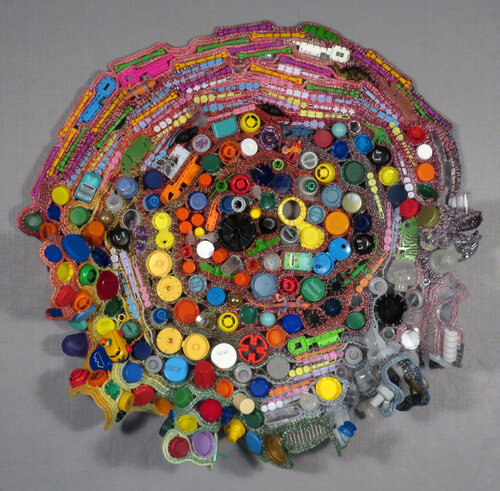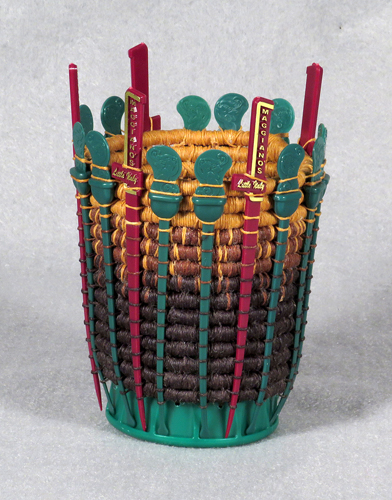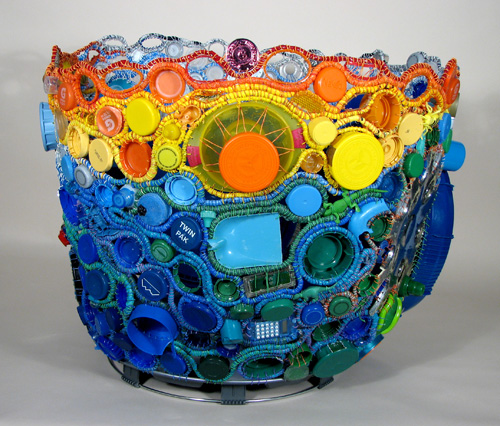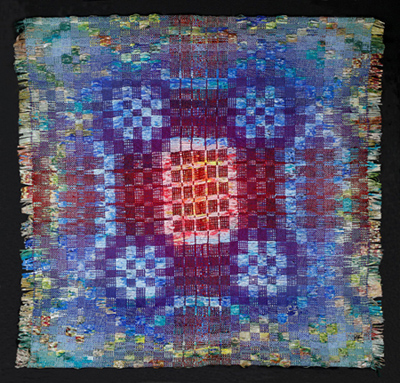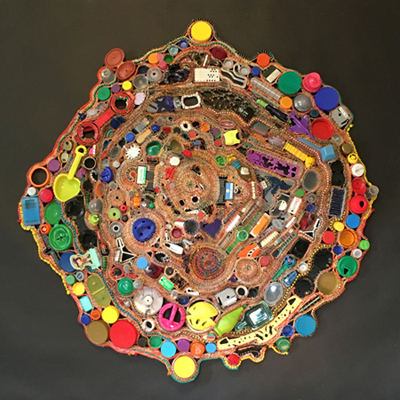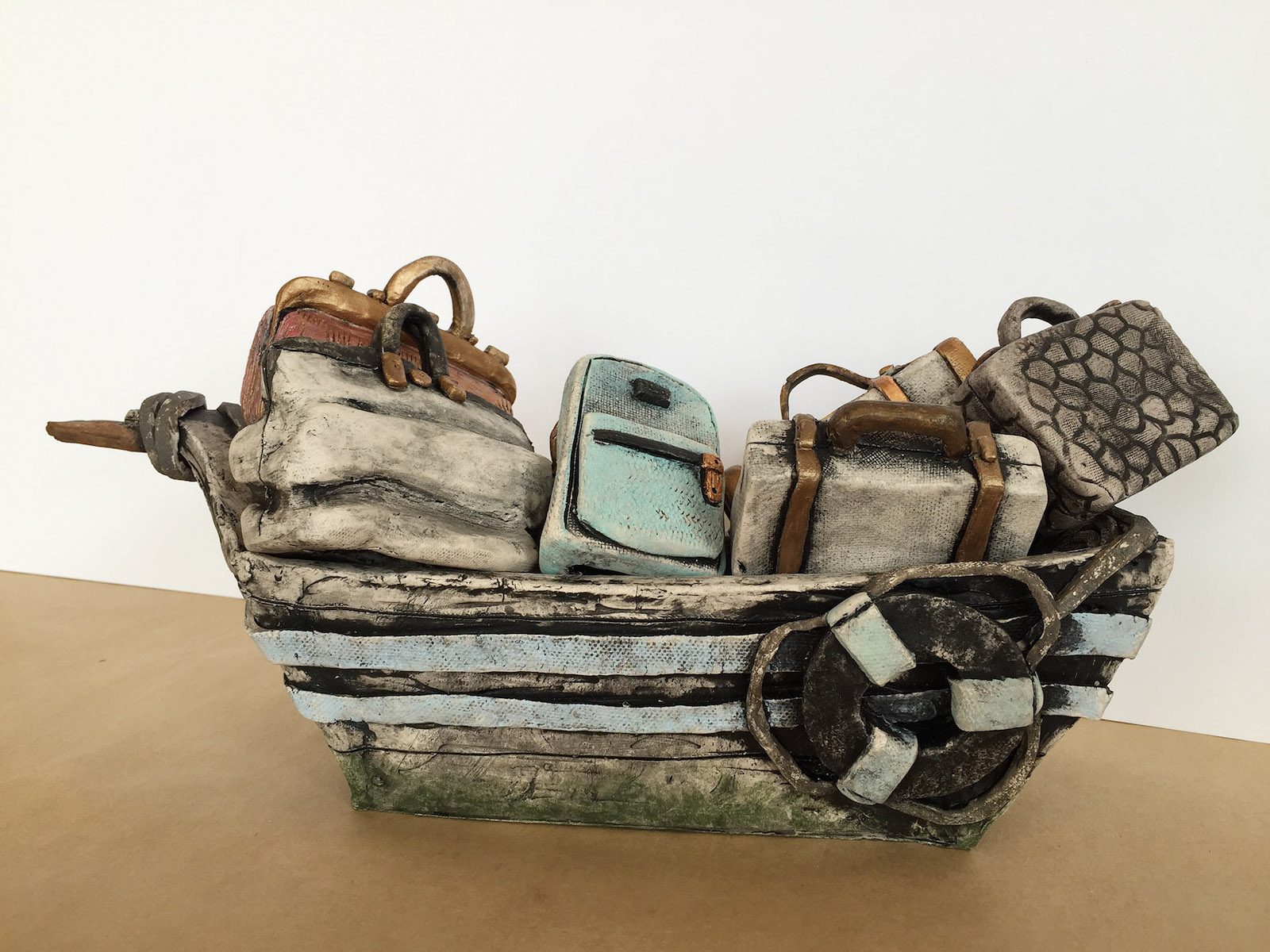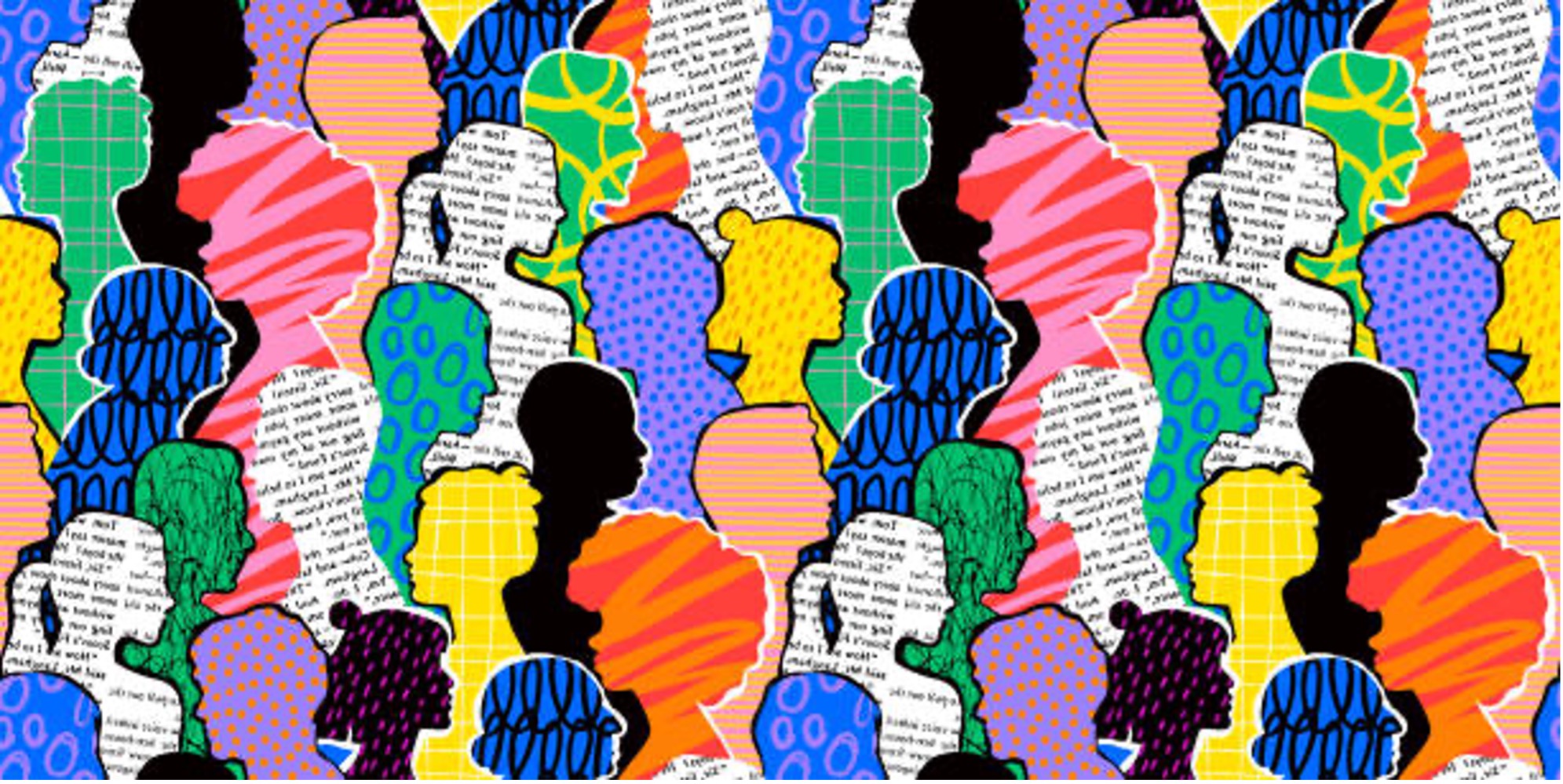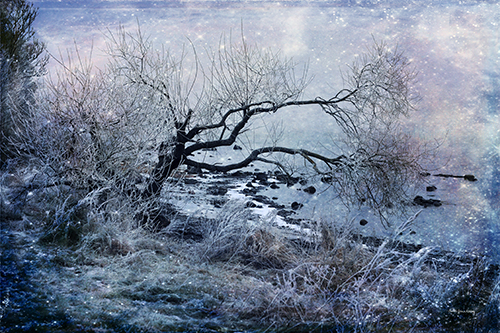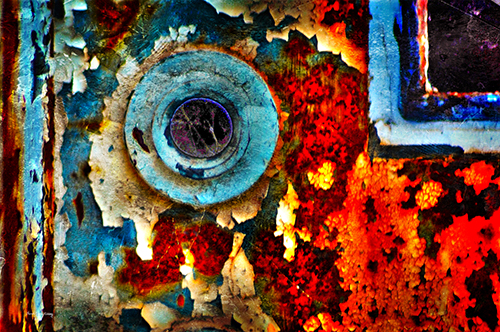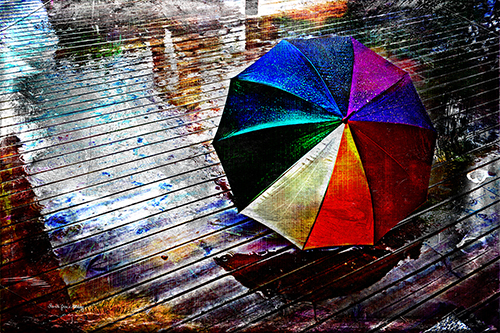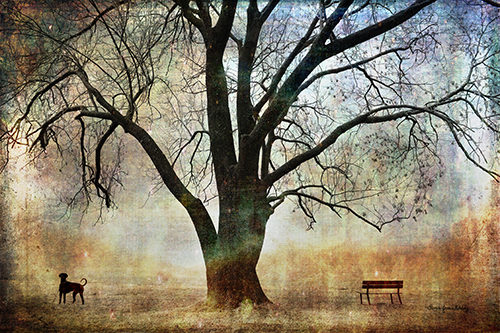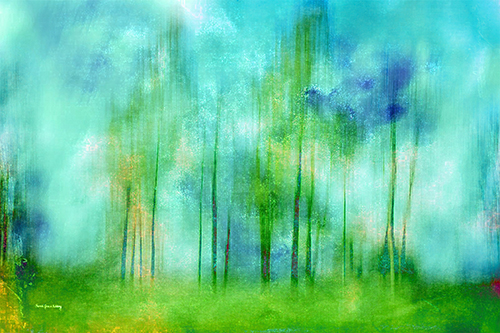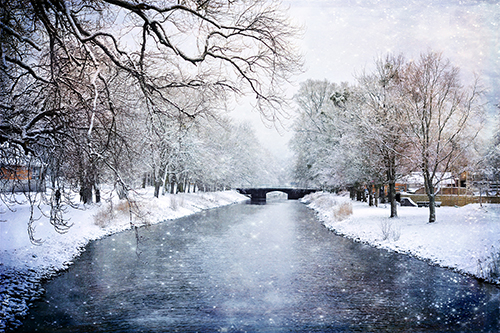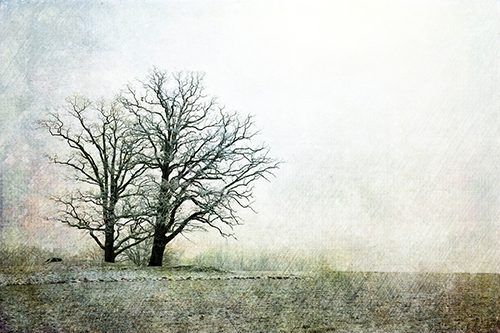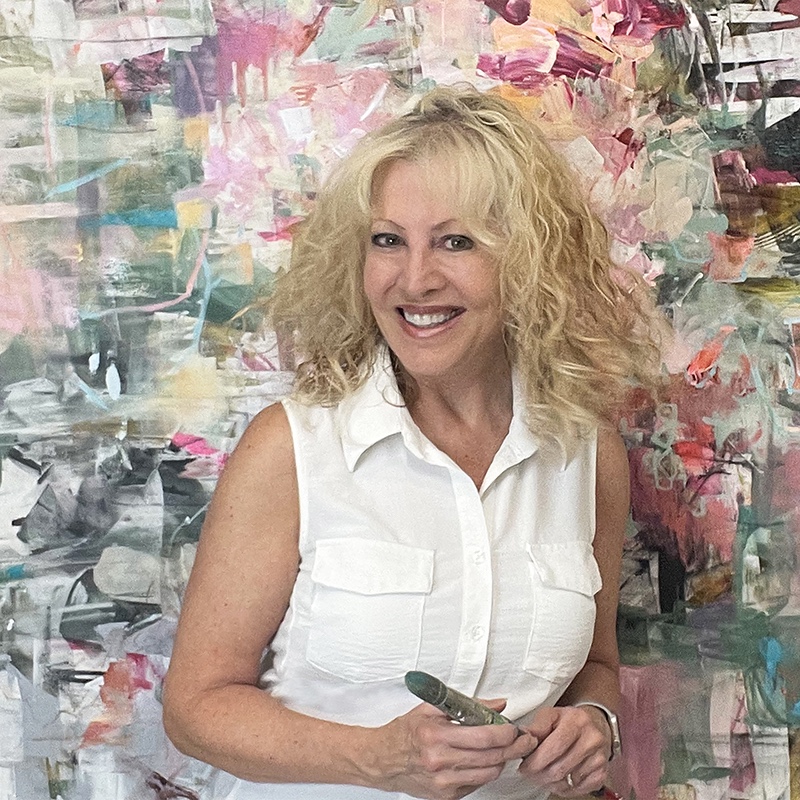Featured Artist Marya Lowe | Artsy Shark
[ad_1]
Artist Marya Lowe shares a boldly colorful collection of contemporary fiber art, fueled by a self-taught process. View more of her portfolio on her website.
“Lily Pond” textiles, 28″ x 34″
I am a textile artist and came to it in the common way, by making traditional quilts. I made reproductions of old quilts, bought and studied vintage quilts, and immersed myself in quilt and fabric history. This led to an in-home business restoring antique quilts for several years.
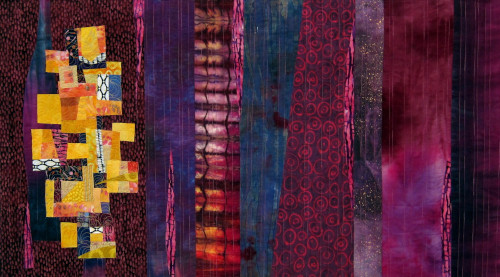
“Old Barn Door” textiles, 26″ x 43″
One day, a piece of abstract art simply bewitched me. Soon I closed the restoration business and began again to study everything I could about art, especially abstract textile art. Having no formal art education in my background, I taught myself by trial and error. I attended workshops, and studied and read about abstract art.
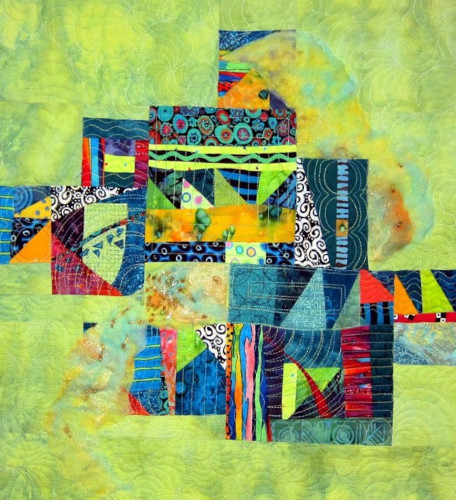
“Chartreuse-I” textiles, 23″ x 21″
Perhaps the biggest boost was an early self-challenge that lead me to my bedrock element, which I call a wonky. I challenged myself to make 100 small improvisational blocks in 100 days. Of course, after 100 days I had well over 100 blocks. This exercise taught me a lot about contrast, shape, and the value of black and white in a design.
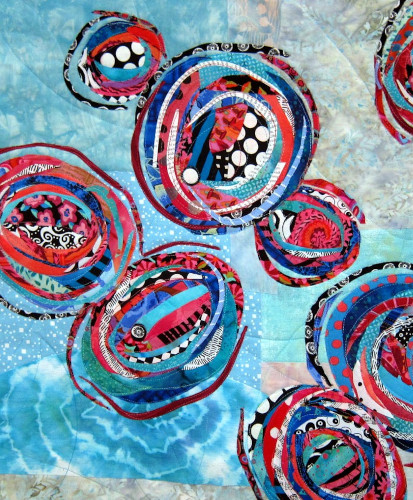
“Lightness-IV” textiles, 19″ x 17″
I began to group these wonkies together into art quilts. I found that using these colorful, energetic, visually-textured blocks against a calm background provided me with the artistic foundation I could return to again and again, developing it in new ways. Look for the wonkies in my work—you will almost always find some!
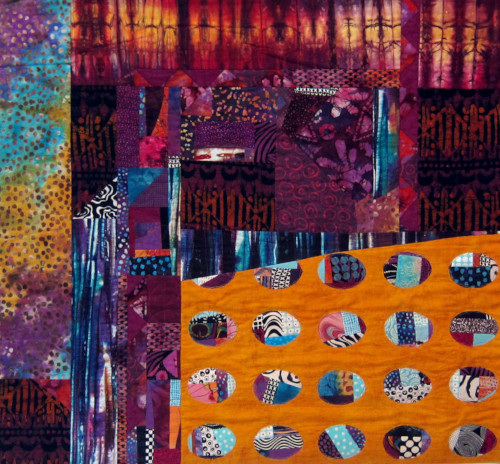
“Hidden In Plain Sight” textiles, 37″ x 39″
My work is color-drenched. Saturated darks, bright clear colors, and edgy colors grab attention. I mix visual textures freely so that there is a busyness to almost all of my work.
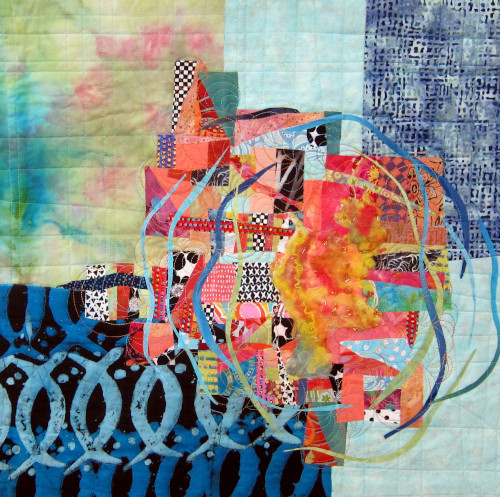
“Surfacing-I” textiles, 23″ x 24″
A friend once advised me to “control the chaos” and I honestly do try to control it….but just barely. Chaos and serenity seem to belong together in my work. That mirrors my life: there are no holds barred in my studio, but once I leave it, I strive to keep my life calm and simple with a strongly formed foundation. It is this balance of chaos and calm that appeals to me in both my life and textile work.
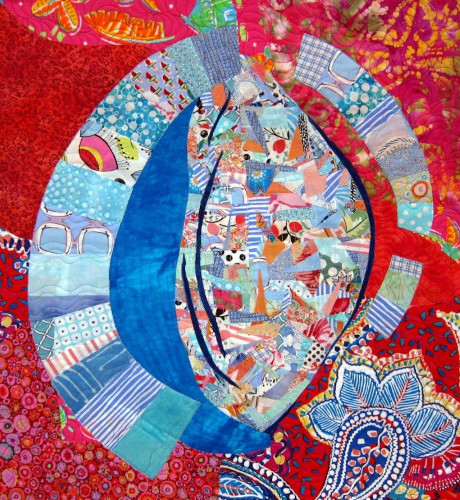
“Seedpod-VIII”, textiles, 25″ x 23″
I create primarily fused collaged abstracts. Now and again the hum of my old Singer Featherweight entices me to return to machine-pieced work. I use commercially printed cotton fabrics, silks, vintage fabrics, re-purposed clothing, canvas, African batiks, my own hand-dyed fabrics, paper, paint, hand-embroidery, machine—whatever the piece requires.
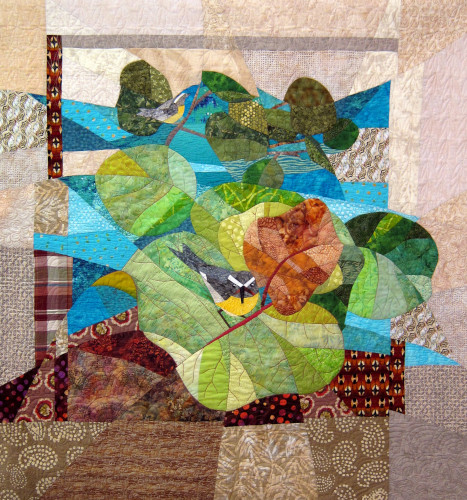
“St. John Bananaquits and Sea Grape Leaves” textiles, 53″ x 49″
I tend to work in series, which allows me to mine a particular image or concept and present it in various ways. Some series approach realism, but always with an abstracted element, as in my Seedpods series, or my series called Earth, Sea, Sky.
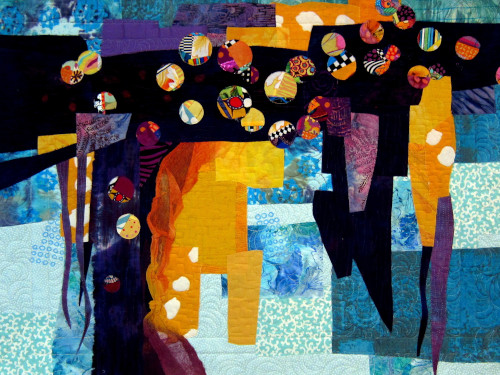
“From the Depths” textiles, 24″ x 32″
Most of my series embrace totally abstract art. I feel that this allows me to convey a mood or thought in my own way. It also allows the viewer to approach my work with his or her own history, interests, and interpretations. Sometimes it simply lets me play with color combinations or shapes that entice me with no underlying message, just a canvas of energy, edginess, or ease.
Marya Lowe invites you to follow on Instagram.
Want to stay current on cutting edge business articles from Artsy Shark, plus artist features, and an invitation to the next Call for Artists? Click below to sign up for our twice-monthly email. You’ll get all this plus opportunities and special offers that you can’t get anywhere else!
[ad_2]
Source link
